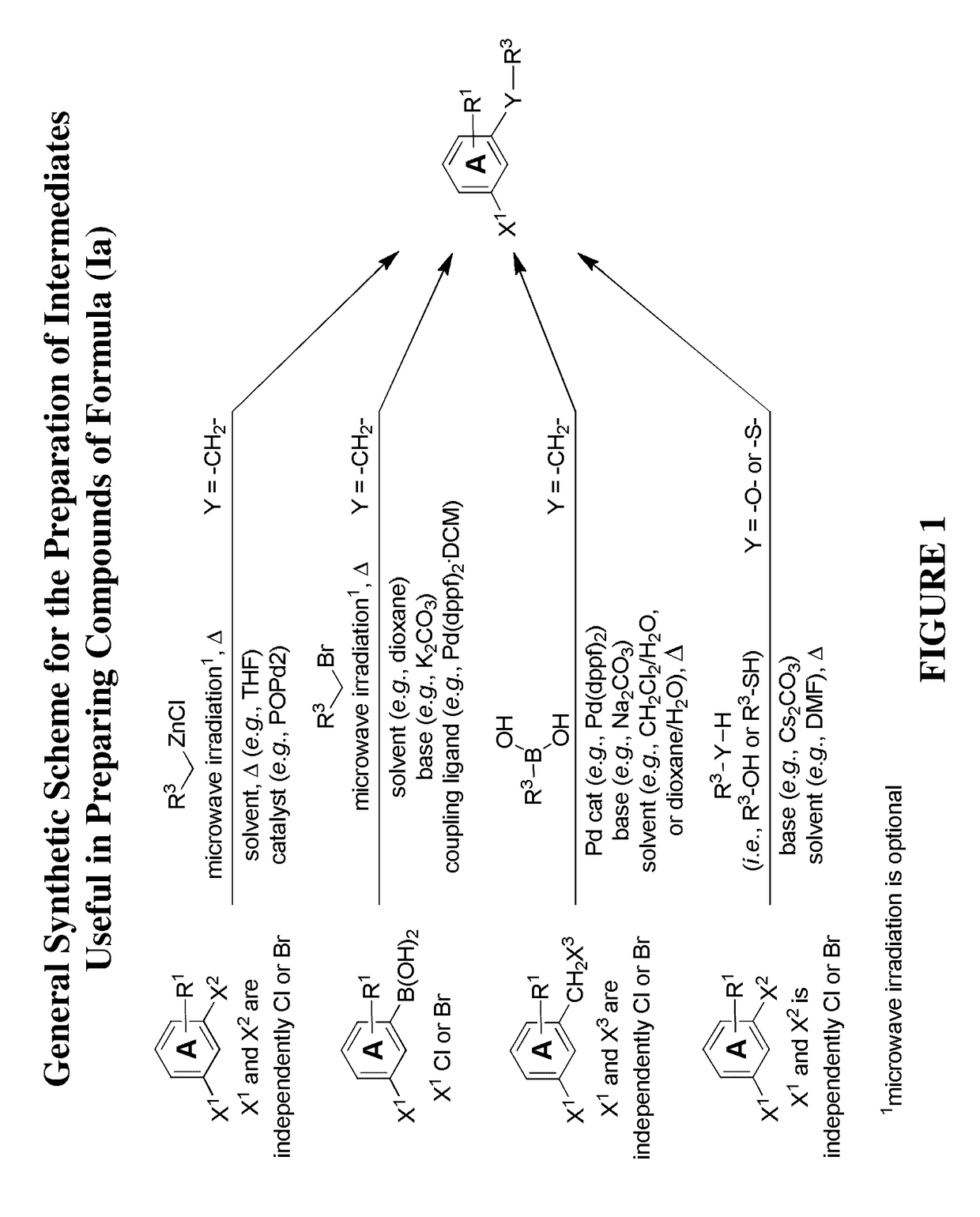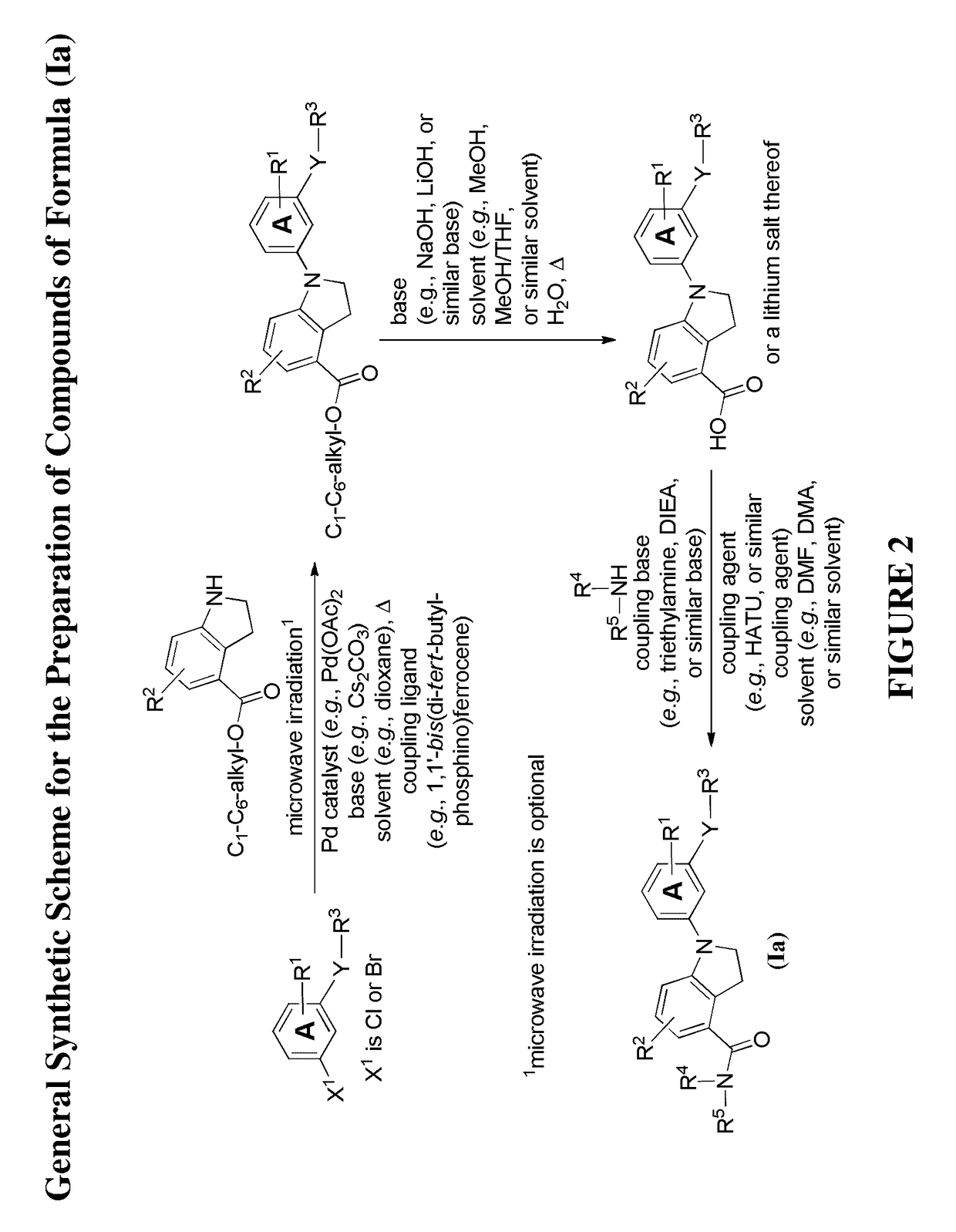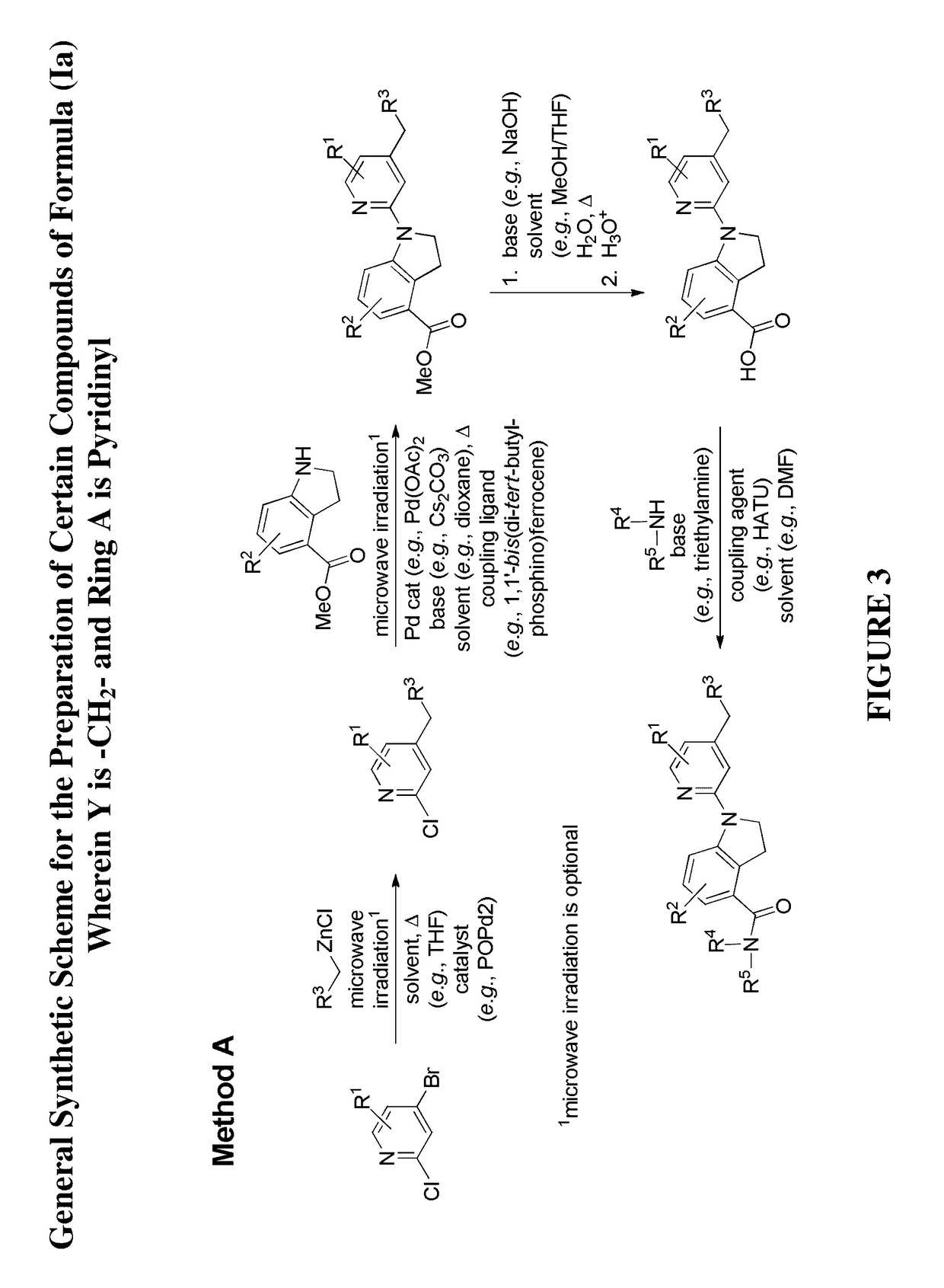1-heteroaryl-indoline-4-carboxamides as modulators of GPR52 useful for the treatment or prevention of disorders related thereto
a technology of heteroarylindoline and gpr52, which is applied in the field of compounds, can solve problems such as the decrease of pka activity, and achieve the effect of reducing side effects and reducing side effects
- Summary
- Abstract
- Description
- Claims
- Application Information
AI Technical Summary
Benefits of technology
Problems solved by technology
Method used
Image
Examples
example 1
of Compounds of the Present Invention
[0445]Illustrated syntheses for compounds of the present invention are shown in FIG. 1 to FIG. 14 wherein the variables (e.g., Y, Ring A, R1, R2, R3, R4, and R5) have the same definitions as used throughout this disclosure.
[0446]The compounds disclosed herein and their syntheses are further illustrated by the following examples. Additional illustrated syntheses for compounds of the present invention are shown in FIGS. 1 to 14 where the symbols have the same definitions as used throughout this disclosure. The following examples are provided to further define the invention without, however, limiting the invention to the particulars of these examples. The compounds described herein, supra and infra, are named according to the AutoNom version 2.2, CS ChemDraw Ultra Version 9.0.7, or ChemBioDraw Ultra 12.0.2.1076. In certain instances common names are used and it is understood that these common names would be recognized by those skilled in the art.
[04...
example 1.1
of (S)-3-Amino-2-fluoropropan-1-ol
Step A: Preparation of (R)-Methyl 2-Amino-3-hydroxypropanoate
[0449]To a solution of (R)-2-amino-3-hydroxypropanoic acid (3 g, 28.55 mmol) in MeOH (40 mL) was slowly added thionyl chloride (2.082 mL, 28.55 mmol) at 0° C. The mixture was heated under reflux at 70° C. for 2 hours, cooled to room temperature, and concentrated to furnish crude (R)-methyl 2-amino-3-hydroxypropanoate which was taken to Step B without further purification. LCMS m / z=120.2 [M+1]+.
Step B: Preparation of (R)-Methyl 2-(Dibenzylamino)-3-hydroxypropanoate
[0450]To crude (R)-methyl 2-amino-3-hydroxypropanoate suspended in THF (40 mL) and DMSO (10 mL) was added sodium bicarbonate (23.98 g, 285.5 mmol) and benzyl bromide (16.98 mL, 142.7 mmol). The mixture was heated to reflux (85° C.) for 3 hours. After cooling to room temperature, the solids were filtered off and the solution was concentrated. The residue was then dissolved in ethyl acetate, washed with water and brine, dried over N...
example 1.2
of (R)-3-Amino-2-fluoropropan-1-ol
[0454](R)-3-Amino-2-fluoropropan-1-ol was prepared from (S)-2-amino-3-hydroxypropanoic acid using the above method (Example 1.1). 1H NMR (400 MHz, CDCl3): δ ppm 1.88 (brs, 3H), 2.97-3.13 (m, 2H), 3.80-3.88 (m, 2H), 4.47-4.62 (dp, J=9.04 Hz, 47.89 Hz, 1H).
PUM
 Login to View More
Login to View More Abstract
Description
Claims
Application Information
 Login to View More
Login to View More - R&D
- Intellectual Property
- Life Sciences
- Materials
- Tech Scout
- Unparalleled Data Quality
- Higher Quality Content
- 60% Fewer Hallucinations
Browse by: Latest US Patents, China's latest patents, Technical Efficacy Thesaurus, Application Domain, Technology Topic, Popular Technical Reports.
© 2025 PatSnap. All rights reserved.Legal|Privacy policy|Modern Slavery Act Transparency Statement|Sitemap|About US| Contact US: help@patsnap.com



